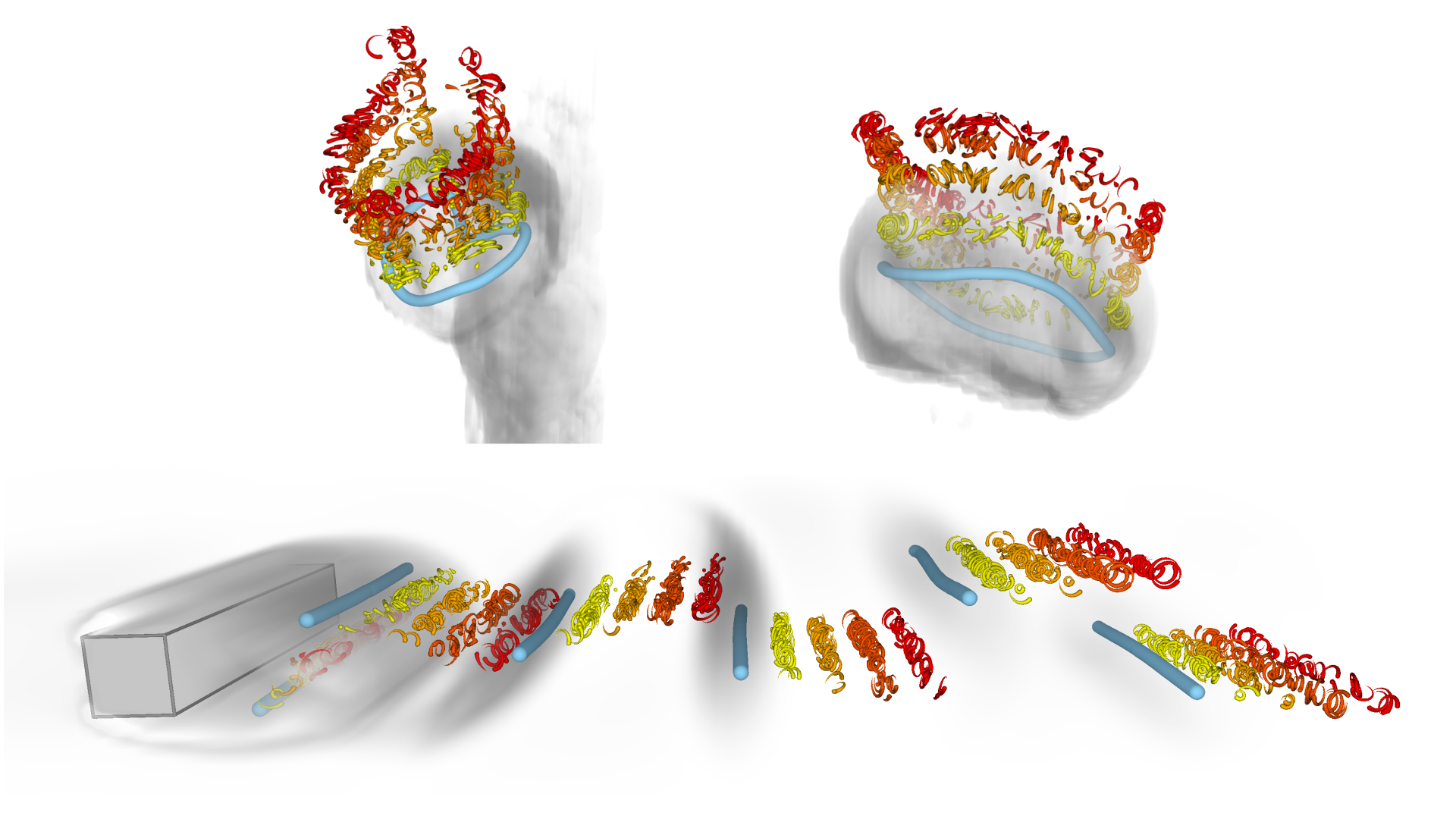Objective Lagrangian Vortex Cores and their Visual Representations
Tobias Günther - Friedrich-Alexander-University Erlangen-Nürnberg, Erlangen, Germany
Holger Theisel - University of Magdeburg, Magdeburg, Germany
Download Supplemental Material
Room: Bayshore VI
2024-10-18T12:30:00ZGMT-0600Change your timezone on the schedule page
2024-10-18T12:30:00Z

Fast forward
Full Video
Keywords
Flow visualization, vortices, objective methods
Abstract
The numerical extraction of vortex cores from time-dependent fluid flow attracted much attention over the past decades. A commonly agreed upon vortex definition remained elusive since a proper vortex core needs to satisfy two hard constraints: it must be objective and Lagrangian. Recent methods on objectivization met the first but not the second constraint, since there was no formal guarantee that the resulting vortex coreline is indeed a pathline of the fluid flow. In this paper, we propose the first vortex core definition that is both objective and Lagrangian. Our approach restricts observer motions to follow along pathlines, which reduces the degrees of freedoms: we only need to optimize for an observer rotation that makes the observed flow as steady as possible. This optimization succeeds along Lagrangian vortex corelines and will result in a non-zero time-partial everywhere else. By performing this optimization at each point of a spatial grid, we obtain a residual scalar field, which we call vortex deviation error. The local minima on the grid serve as seed points for a gradient descent optimization that delivers sub-voxel accurate corelines. The visualization of both 2D and 3D vortex cores is based on the separation of the movement of the vortex core and the swirling flow behavior around it. While the vortex core is represented by a pathline, the swirling motion around it is visualized by streamlines in the correct frame. We demonstrate the utility of the approach on several 2D and 3D time-dependent vector fields.